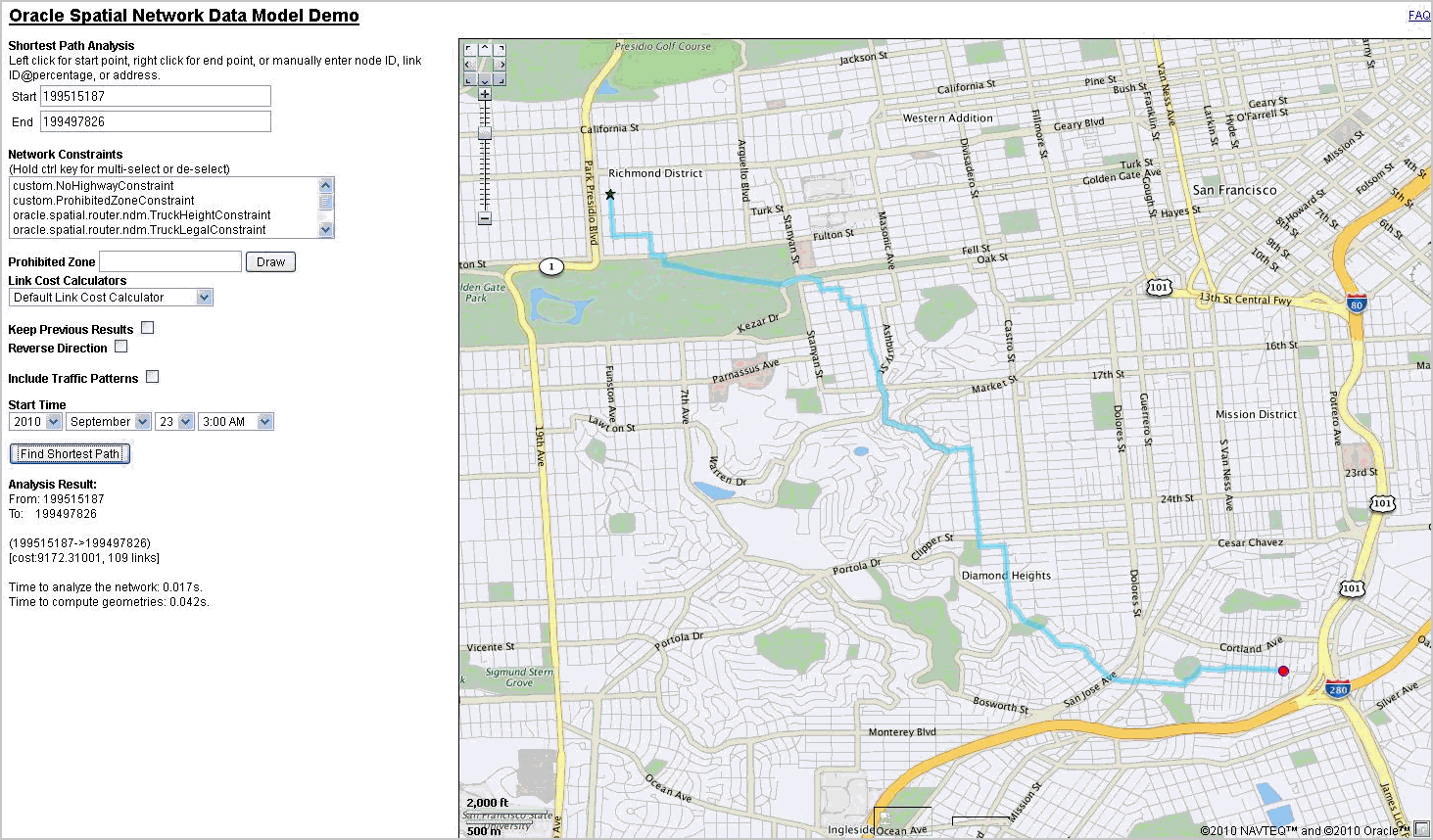5.1 Introduction to Network Modeling
In many applications, capabilities or objects are modeled as nodes and links in a network. The network model contains logical information such as connectivity relationships among nodes and links, directions of links, and costs of nodes and links.
With logical network information, you can analyze a network and answer questions, many of them related to path computing and tracing. For example, for a biochemical pathway, you can find all possible reaction paths between two chemical compounds; or for a road network, you can find the following information:
-
What is the shortest (distance) or fastest (travel time) path between two cities?
-
What is the closest hotel to a specific airport, and how can I get there?
In addition to logical network information, spatial information such as node locations and link geometries can be associated with the network. This information can help you to model the logical information (such as the cost of a route, because its physical length can be directly computed from its spatial representation).
The Spatial Network Data Model feature can be used for large, complex networks. For example, Figure 5-1 shows San Francisco and links, which have been defined using the Network Data Model feature, displayed in a demo web-based application for network analysis. (You can install this demo using the NDM tutorial described in Network Data Model Tutorial and Other Resources.)
The generic data model and network analysis capability can model and analyze many kinds of network applications in addition to traditional geographical information systems (GIS). For example, in biochemistry, applications may need to model reaction pathway networks for living organisms; and in the pharmaceutical industry, applications that model the drug discovery process may need to model protein-protein interaction.
The network modeling capabilities of Spatial include schema objects and an application programming interface (API). The schema objects include metadata and network tables. The API includes a server-side PL/SQL API (the SDO_NET package) for creating and managing networks in the database, and a middle-tier (or client-side) Java API for network editing and analysis.
Parent topic: Network Data Model Overview
